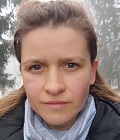Table of Contents |
guest 2025-07-05 |
Event Information
Speakers
Michael MacCoss
Brendan MacLean
Robert Ahrends
Chris Ashwood
Elena Barletta
Natan Basisty
Muluneh Fashe
MaKayla Foster
Michelle Kennedy
Bini Ramachandran
Juan Rojas
Virag Sagi-Kiss
Nikunj Tanna
Thanks!
Thanks for helping make this year's online Skyline User Group Meeting very much a success!
With coronavirus still a concern, we reluctantly opted to take our annual face-to-face event online again over two days -- Oct 27 and 28, 2021 - hopefully for the very last time! Without missing a beat, Skyline users rallied once again to hear 11 speakers on a diverse spectrum of mass spectrometry topics plus Skyline Principal Developer Brendan MacLean deliver his always-entertaining annual state-of-the-project update on the past and future of Skyline. Thanks again for the -- as always -- spirited Q&A sessions after each presentation.
Session recordings: including the Q&A sessions are available from the Speaker's page under each speaker's bio below.
Q&A recap: Either written response or time stamp location of live answer in video: Day 1, Day 2
We would like to thank our speakers who never wavered in their commitment to sharing their work. They volunteered their time to create and deliver informative presentations despite myriad timezones, practice sessions, and technical challenges. Thanks too for the ongoing support from instrument vendors who help fund our efforts and lastly, to our users who continually inspire us with the new and innovative applications for Skyline.
But let's not wait until the next ASMS to keep the discussion going: got frustrations? suggestions? praise? or any other issues, let's talk here ... now ...: https://skyline.ms/support.url
We look forward to seeing and conversing with you in person! at ASMS Minneapolis in 2022!
-- Mike MacCoss, Brendan MacLean and Event Organizers
Michael J. MacCoss, Ph.D. (University of Washington): Introduction and event host
Brendan MacLean (MacCoss Lab, University of Washington): Status of the Skyline Open-source Software Project 13 Years after its Inception
The Skyline project started just after ASMS 2008 as a 2-year effort to bring better SRM/MRM software tools to the NCI-CPTAC Verification Working Group that could support the variety of mass spectrometers in use in participating laboratories. Nearly 13 years later, the Skyline project is a thriving multi-omics community open-source collaboration supporting 6 mass spec instrument vendors integrated with a wide variety of external software, with many thousands of users worldwide and over ten thousand instances started each week. (More info...)
Chris Ashwood, Ph.D., (Glycomics Core, BIDMC): High-throughput Glycan Composition Profiling Enabled by MALDISkyLink and the Skyline Ecosystem
Protein glycosylation is the most frequent and varied type of co- and post-translational modification seen in eukaryotic cells. Using our newly developed software, MALDISkyLink, individual spectra are converted into a format compatible with the Skyline ecosystem, which is typically limited to LC- or CE- MS data. This enables the use of Skyline Batch for MALDI-based glycan analysis by extracting precursor information for over 500 pre-defined glycan compositions, refining for only high-quality precursors, and exporting the relative intensities of each high-quality glycan composition detection. (More info...)
Natan Basisty, Ph.D., (NIH): Analysis of Protein Turnover Rates in Skyline with the TurnoveR External Tool
While the measurement of protein turnover relevant in many biological settings, the study of in vivo protein turnover in whole organisms remain computationally difficult for most scientists due to lack of tools on widely accessible and user-friendly platforms. Here we will describe and demonstrate a new Skyline external tool, 'TurnoveR', for the accurate calculation, visualization, and statistical analysis of protein turnover rates based on mass spectrometry analysis of metabolic labeling experiments in whole animals, and demonstrate the application of TurnoveR in mouse studies of aging and muscle atrophy. (More info...)
Michelle Kennedy, (Cristea Lab, Princeton University): Leveraging Skyline to Develop and Analyze Data from a Targeted Mass Spectrometry Assay for Pan-herpesvirus Protein Detection
By taking advantage of the targeted mass spectrometry tools available in the Skyline interface, we have designed and experimentally validated a targeted mass spectrometry assay for monitoring human viruses representing the three Herpesviridae subfamilies. Our study provides a reproducible framework for monitoring the progression of herpesvirus infections under different conditions and it benefitted heavily from the accessible environment afforded by Skyline for data analysis and integration.(More info...)
Bini Ramachandran, Ph.D., (FARRP, University of Nebraska-Lincoln): Matrix-independent Calibration: A Consensus Strategy to Quantify an Analyte from Different Types of Matrices.
The novel method appeared to be sensitive, accurate, and precise in the detection of milk allergens in five different test matrices evaluated, containing known amounts of allergen.
In this study, we are demonstrating a matrix-independent strategy for targeted detection of milk allergens from multiple food matrices. An inert carrier protein was incorporated as a background matrix for both the calibrants and test samples from the sample preparation stages. This matrix-independent strategy could improve the adoption and applicability of targeted mass spectrometry approaches for samples that are otherwise challenging for immunochemistry approaches in routine testing labs. (More info...)
Juan Rojas, (University of Leipzig - Hoffmann Lab): Skyline for the Parallel Analysis of LC-TWIMS-MS/MS DDA and DIA Data
Recently, a solution to inherent poor ion beam sampling of time-of-flight (TOF) mass analyzers has been proposed by restricting detection to ions expected at specific arrival times after being separated in a travelling wave ion mobility spectrometry (TWIMS) cell. Here, we show that this approach can be applied to data independent acquisition (DIA) using a so-called signal enhancement MSE (seMSE) experiment, which was compared to two different TWIMS-DDA and three TWIMS-MSE different methods with respect to the spectral quality of peptide identifications and, more importantly, fragment ion sensitivity. Although seMSE provided limited peptide identifications due to isobaric fragment ion interferences, the sensitivity of fragment ions was much improved. Thus, seMSE provided up to tenfold higher signal intensities than the other tested quantitative methods at the fragment level, which can be favorably supplemented with high quality TWIMS-DDA spectral libraries. (More info...)
Lightning Talks
Robert Ahrends, Ph.D., (University of Vienna): Targeting the Lipid Metabolism with LipidCreator and STAMPS to Investigate Fat Cell Differentiation of Mesenchymal Stem Cells
We recently introduce tools working natively with Skyline. Here we would like to present two which we use in our daily lab routine to reduce time and effort in the development of targeted omics workflows such as we need for the investigation of fat cell differentiation. STAMPS, a pathway-centric web service for the development of targeted proteomics assays. STAMPS guides the user by providing several intuitive interfaces for a rapid and simplified method design. Applying our curated framework to signaling and metabolic pathways, we reduced the average assay development time by a factor of ∼150. LipidCreator, is a software that fully supports targeted lipidomics assay development. LipidCreator offers a comprehensive framework to compute MS/MS fragment masses for over 60 lipid classes. Both tools are fully computationally and analytically validated and prove that there are capable to generate concise targeted experiments to analyze and to dissect the lipid metabolism and signaling. (More info...)
Elena Barletta, (University of Zurich): Mass Spectrometry-based Identification of Allergen Proteins Involved in Seafood-related Allergic Reactions
We are presenting our bottom-up proteomics approach using LC-MS/MS coupled with Parallel Reaction Monitoring (PRM) technique to target alergen pepties that cause food allergies from shellfish -- a major cause of food-induced anaphylaxis. (More info...)
Muluneh Fashe, Ph.D., (University of North Carolina - Lee Lab): Using Skyline to Quantify Drug Metabolizing Enzyme and Transport Protein Concentrations in Sandwich-Cultured Primary Human Hepatocytes
We used a targeted quantitative proteomic isotope dilution nanoLC-MS/MS method to quantify absolute concentrations of over 70 phase I and II drug-metabolizing enzyme (DME) and transport proteins in membrane fractions isolated from sandwich-cultured primary human hepatocytes in the absence or presence of inducers. We analyzed the quantitative proteomics data using the Skyline software and then using MultiQuant (SCIEX) software and compared the concentrations between the platforms using correlation and Bland-Altman plot analyses. This presentation highlights the applicability of Skyline for processing and evaluating quantitative targeted absolute proteomics data for multiple DMEs and transporter proteins in the membrane fractions of human primary hepatocytes. (More info...)
MaKayla Foster, (North Carolina State University) Utilizing Skyline for the Evaluation and Quantitation of Per- and Polyfluoroalkyl Substances
Per- and polyfluoroalkyl substances (PFAS) are environmental contaminants characterized by extensive fluorination along extended aliphatic chains, rendering them chemically inert, thermally stable and hydrophobic. These physicochemical properties make PFAS uniquely suited for many household and industrial applications, but also cause them to bioaccumulate and become toxic as they increase in concentration in both the environment and biological systems. To characterize PFAS in various sample types, we utilized a simultaneous liquid chromatography, ion mobility spectrometry and mass spectrometry (LC-IMS-MS) platform to evaluate 100 PFAS standards and create a Skyline library containing LC retention times, IMS collision cross sections (CCSs) and m/z values. This PFAS library was then applied to water, tissue and blood samples to determine PFAS content where numerous biomolecules were also present. (More info...)
Virag Sagi-Kiss, Ph.D., (Imperial College London): Rapid Sample Preprocessing of a Large Number of Targeted Metabolites with Skyline
We are developing and applying targeted profiling methods for discovering molecular pathways underlying healthy aging. We use a workflow in Skyline that allows us to speed up the data pre-processing steps: adjust retention time windows, filter contamination present in blanks, monitor retention time drifts, evaluate stability of Quality Control (QC) samples, evaluate the linearity of analytes via dilution curve of QC and aid extracting data for close eluting isobaric compounds.(More info...)
Nikunj Tanna, (Waters Corporation): MassLynx Skyline Interface - Enabling automated MRM method development for targeted proteomics and peptide bioanalysis workflows
Protein therapeutics and biomarkers are increasingly becoming commonplace in laboratories traditionally performing small molecule LC-MS assays. Developing MRM methods for peptides v/s small molecules has some fundamental differences and often requires retraining of personnel. Skyline has been the informatics platform of choice within the proteomics world, and lends itself perfectly to aid and guide MRM method development for TQ assays. MassLynx Skyline interface is an informatics tool which integrates, simplifies and automates the TQ MRM method development process, ensuring systematic, consistent and robust method development across all user levels. (More info...)
Event Information
Welcome Skyline Users,
The Skyline Team is pleased to announce the Tenth Annual Skyline User Group Meeting before ASMS. Once more, we will be online with two webinars during the week before ASMS, due to the lingering situation with COVID-19. That said, there is just too much exciting work going on, by you the research community using Skyline, not to share once again this year -- and hopefully for the last time in this virtual format.
Thanks to the event sponsors (see below) for their many years of collaborating with the Skyline project on exciting new quantitative mass spec technologies and data processing methods.
Please join us online one more time.
Brendan MacLean
Principal Developer
| When: | Wednesday, October 27, 2021 from 9:00 - 10:30 am (Pacific Time) Thursday, October 28, 2021from 9:00 - 10:30 am (Pacific Time) |
|
| Where: | Webinar format (details to be sent to registered attendees) |
[registration closed]
Michael J. MacCoss, Ph.D. (University of Washington): Introduction and event host
Brendan MacLean (MacCoss Lab, University of Washington): Status of the Skyline Open-source Software Project 13 Years after its Inception
The Skyline project started just after ASMS 2008 as a 2-year effort to bring better SRM/MRM software tools to the NCI-CPTAC Verification Working Group that could support the variety of mass spectrometers in use in participating laboratories. Nearly 13 years later, the Skyline project is a thriving multi-omics community open-source collaboration supporting 6 mass spec instrument vendors integrated with a wide variety of external software, with many thousands of users worldwide and over ten thousand instances started each week. (More info...)
Chris Ashwood, Ph.D., (Glycomics Core, BIDMC): High-throughput Glycan Composition Profiling Enabled by MALDISkyLink and the Skyline Ecosystem
Protein glycosylation is the most frequent and varied type of co- and post-translational modification seen in eukaryotic cells. Using our newly developed software, MALDISkyLink, individual spectra are converted into a format compatible with the Skyline ecosystem, which is typically limited to LC- or CE- MS data. This enables the use of Skyline Batch for MALDI-based glycan analysis by extracting precursor information for over 500 pre-defined glycan compositions, refining for only high-quality precursors, and exporting the relative intensities of each high-quality glycan composition detection. (More info...)
Natan Basisty, Ph.D., (NIH): Analysis of Protein Turnover Rates in Skyline with the TurnoveR External Tool
While the measurement of protein turnover relevant in many biological settings, the study of in vivo protein turnover in whole organisms remain computationally difficult for most scientists due to lack of tools on widely accessible and user-friendly platforms. Here we will describe and demonstrate a new Skyline external tool, 'TurnoveR', for the accurate calculation, visualization, and statistical analysis of protein turnover rates based on mass spectrometry analysis of metabolic labeling experiments in whole animals, and demonstrate the application of TurnoveR in mouse studies of aging and muscle atrophy. (More info...)
Michelle Kennedy, (Cristea Lab, Princeton University): Leveraging Skyline to Develop and Analyze Data from a Targeted Mass Spectrometry Assay for Pan-herpesvirus Protein Detection
By taking advantage of the targeted mass spectrometry tools available in the Skyline interface, we have designed and experimentally validated a targeted mass spectrometry assay for monitoring human viruses representing the three Herpesviridae subfamilies. Our study provides a reproducible framework for monitoring the progression of herpesvirus infections under different conditions and it benefitted heavily from the accessible environment afforded by Skyline for data analysis and integration.(More info...)
Bini Ramachandran, Ph.D., (FARRP, University of Nebraska-Lincoln): Matrix-independent Calibration: A Consensus Strategy to Quantify an Analyte from Different Types of Matrices.
The novel method appeared to be sensitive, accurate, and precise in the detection of milk allergens in five different test matrices evaluated, containing known amounts of allergen.
In this study, we are demonstrating a matrix-independent strategy for targeted detection of milk allergens from multiple food matrices. An inert carrier protein was incorporated as a background matrix for both the calibrants and test samples from the sample preparation stages. This matrix-independent strategy could improve the adoption and applicability of targeted mass spectrometry approaches for samples that are otherwise challenging for immunochemistry approaches in routine testing labs. (More info...)
Juan Rojas,, (University of Leipzig - Hoffmann Lab): Skyline for the Parallel Analysis of LC-TWIMS-MS/MS DDA and DIA Data
Recently, a solution to inherent poor ion beam sampling of time-of-flight (TOF) mass analyzers has been proposed by restricting detection to ions expected at specific arrival times after being separated in a travelling wave ion mobility spectrometry (TWIMS) cell. Here, we show that this approach can be applied to data independent acquisition (DIA) using a so-called signal enhancement MSE (seMSE) experiment, which was compared to two different TWIMS-DDA and three TWIMS-MSE different methods with respect to the spectral quality of peptide identifications and, more importantly, fragment ion sensitivity. Although seMSE provided limited peptide identifications due to isobaric fragment ion interferences, the sensitivity of fragment ions was much improved. Thus, seMSE provided up to tenfold higher signal intensities than the other tested quantitative methods at the fragment level, which can be favorably supplemented with high quality TWIMS-DDA spectral libraries. (More info...)
Lightning Talks
Robert Ahrends, Ph.D., (University of Vienna): Targeting the Lipid Metabolism with LipidCreator and STAMPS to Investigate Fat Cell Differentiation of Mesenchymal Stem Cells
We recently introduce tools working natively with Skyline. Here we would like to present two which we use in our daily lab routine to reduce time and effort in the development of targeted omics workflows such as we need for the investigation of fat cell differentiation.
STAMPS, a pathway-centric web service for the development of targeted proteomics assays. STAMPS guides the user by providing several intuitive interfaces for a rapid and simplified method design. Applying our curated framework to signaling and metabolic pathways, we reduced the average assay development time by a factor of ∼150.
LipidCreator, is a software that fully supports targeted lipidomics assay development. LipidCreator offers a comprehensive framework to compute MS/MS fragment masses for over 60 lipid classes. Both tools are fully computationally and analytically validated and prove that there are capable to generate concise targeted experiments to analyze and to dissect the lipid metabolism and signaling.
(More info...)
Elena Barletta, (University of Zurich): Mass Spectrometry-based Identification of Allergen Proteins Involved in Seafood-related Allergic Reactions
We are presenting our bottom-up proteomics approach using LC-MS/MS coupled with Parallel Reaction Monitoring (PRM) technique to target alergen pepties that cause food allergies from shellfish -- a major cause of food-induced anaphylaxis. (More info...)
Muluneh Fashe, Ph.D., (University of North Carolina - Lee Lab): Using Skyline to Quantify Drug Metabolizing Enzyme and Transport Protein Concentrations in Sandwich-Cultured Primary Human Hepatocytes
We used a targeted quantitative proteomic isotope dilution nanoLC-MS/MS method to quantify absolute concentrations of over 70 phase I and II drug-metabolizing enzyme (DME) and transport proteins in membrane fractions isolated from sandwich-cultured primary human hepatocytes in the absence or presence of inducers. We analyzed the quantitative proteomics data using the Skyline software and then using MultiQuant (SCIEX) software and compared the concentrations between the platforms using correlation and Bland-Altman plot analyses. This presentation highlights the applicability of Skyline for processing and evaluating quantitative targeted absolute proteomics data for multiple DMEs and transporter proteins in the membrane fractions of human primary hepatocytes. (More info...)
MaKayla Foster, (North Carolina State University) Utilizing Skyline for the Evaluation and Quantitation of Per- and Polyfluoroalkyl Substances
Per- and polyfluoroalkyl substances (PFAS) are environmental contaminants characterized by extensive fluorination along extended aliphatic chains, rendering them chemically inert, thermally stable and hydrophobic. These physicochemical properties make PFAS uniquely suited for many household and industrial applications, but also cause them to bioaccumulate and become toxic as they increase in concentration in both the environment and biological systems. To characterize PFAS in various sample types, we utilized a simultaneous liquid chromatography, ion mobility spectrometry and mass spectrometry (LC-IMS-MS) platform to evaluate 100 PFAS standards and create a Skyline library containing LC retention times, IMS collision cross sections (CCSs) and m/z values. This PFAS library was then applied to water, tissue and blood samples to determine PFAS content where numerous biomolecules were also present. (More info...)
Virag Sagi-Kiss, Ph.D., (Imperial College London): Rapid Sample Preprocessing of a Large Number of Targeted Metabolites with Skyline
We are developing and applying targeted profiling methods for discovering molecular pathways underlying healthy aging. We use a workflow in Skyline that allows us to speed up the data pre-processing steps: adjust retention time windows, filter contamination present in blanks, monitor retention time drifts, evaluate stability of Quality Control (QC) samples, evaluate the linearity of analytes via dilution curve of QC and aid extracting data for close eluting isobaric compounds.(More info...)
Nikunj Tanna, (Waters Corporation): MassLynx Skyline Interface - Enabling automated MRM method development for targeted proteomics and peptide bioanalysis workflows
Protein therapeutics and biomarkers are increasingly becoming commonplace in laboratories traditionally performing small molecule LC-MS assays. Developing MRM methods for peptides v/s small molecules has some fundamental differences and often requires retraining of personnel. Skyline has been the informatics platform of choice within the proteomics world, and lends itself perfectly to aid and guide MRM method development for TQ assays. MassLynx Skyline interface is an informatics tool which integrates, simplifies and automates the TQ MRM method development process, ensuring systematic, consistent and robust method development across all user levels. (More info...)
Sponsors
 |
 |
 |
 |
 |
 |
 |
 |
 |
|
Speakers
Twelve speakers with interesting and different areas of expertise in Skyline use and development spoke at the Skyline User Group Meeting online in conjunction with ASMS 2021.
Speaker Order
Day 1: Wednesday, October 27
Day 2: Thursday, October 28
Michael MacCoss
 |
Michael MacCoss Mike became interested in biomedical applications of mass spectrometry while working in Dr. Patrick Griffin’s protein mass spectrometry lab at Merck Research Laboratories. He obtained a Ph.D. with Professor Dwight Matthews and pursued a postdoc with Professor John R. Yates III. In 2004 he started the MacCoss lab at the University of Washington and it became obvious that while mass spectrometry data could be collected quickly and robustly, the lack of computational tools for the visualization and analysis of these data was a stumbling block. In 2008 he hired Brendan MacLean with the goal of developing professional quality software tools for quantitative proteomics.
[PDF] |
Brendan MacLean
 |
Brendan MacLean worked at Microsoft for 8 years in the 1990s where he was a lead developer and development manager for the Visual C++/Developer Studio Project. Since leaving Microsoft, Brendan has been the Vice President of Engineering for Westside Corporation, Director of Engineering for BEA Systems, Inc., Sr. Software Engineer at the Fred Hutchinson Cancer Research Center, and a founding partner of LabKey Software. In this last position he was one of the key programmers responsible for the Computational Proteomics Analysis System (CPAS), made significant contributions to the development of X!Tandem and the Trans Proteomic Pipeline, and created the LabKey Enterprise Pipeline. Since that time, he has worked as a Sr. Software Engineer within the MacCoss lab and lead all aspects of design, development and support in creating the Skyline Targeted Proteomics Environment and its growing worldwide user community.
Status of the Skyline open-source software project 13 years after its inceptionThe Skyline project started just after ASMS 2008 as a 2-year effort to bring better SRM/MRM software tools to the NCI-CPTAC Verification Working Group that could support the variety of mass spectrometers in use in participating laboratories. Nearly 13 years later, the Skyline project is a thriving proteomics community open-source collaboration supporting 6 mass spec instrument vendors, integrated with a wide variety of external software, with thousands of users worldwide and many thousands of instances started each week. In this presentation, the Skyline principal developer will present recent developments and a roadmap for the project's future. Topics covered will include:
[PDF] |
Robert Ahrends
 |
Robert Ahrends is a professor of analytical chemistry at the University of Vienna (Austria), Robert founding member of the International Lipidomics Society and Member of the Lipid Standard Initiative. He obtained his Ph.D. at the Humboldt University of Berlin and spent his postdoctoral time at Stanford Medical School in the department of chemical and systems biology. Currently, his lab and team focus on lipid research by developing omics tools to analyze lipids and their metabolizing enzymes in a cardiovascular context.
Targeting the Lipid Metabolism with LipidCreator and STAMPS to Investigate Fat Cell Differentiation of Mesenchymal Stem CellsWe recently introduce different tools working natively with Skyline. Here we would like to present two of these tools which we use in our daily lab routine to reduce time and effort in the development of targeted omics workflows such as we need for the investigation of fat cell differentiation and insulin resistance of preadipocytes. STAMPS, a pathway-centric web service for the development of targeted proteomics assays. STAMPS guides the user by providing several intuitive interfaces for a rapid and simplified method design. Applying our curated framework to signaling and metabolic pathways, we reduced the average assay development time by a factor of ∼150. LipidCreator, is a software that fully supports targeted lipidomics assay development. LipidCreator offers a comprehensive framework to compute MS/MS fragment masses for over 60 lipid classes. LipidCreator provides all functionalities needed to define fragments, manage stable isotope labeling, optimize collision energy and generate in silico spectral libraries. Both tools are fully computationally and analytically validated and prove that there are capable to generate concise targeted experiments to analyze and to dissect the lipid metabolism and lipid-signaling pathways of adipogenesis. Using LipidCreator and STAMPS revealed potential positive feedback from the PTM to the protein concentration level and identified novel regulatory lipid traits impacting fat cell differentiation.[PDF] |
Chris Ashwood
 |
Chris Ashwood Ph.D., is the glycomics core director at the Beth Israel Deaconess Medical Center (BIDMC, Boston, Massachusetts). He received his Ph.D. in analytical glycobiology at Macquarie University, Australia supervised by Prof. Nicolle Packer. He joined the Glycomics Core after his postdoc work at the Medical College of Wisconsin and University of Nebraska Medical Center. The core provides services, instrumentation, and expertise in glycomics to collaborators and clients across the world.
High-throughput Glycan Composition Profiling Enabled by MALDISkyLink and the Skyline EcosystemProtein glycosylation is the most frequent and varied type of co- and post-translational modification seen in eukaryotic cells. Identification of the glycan compositions that modify individual proteins (e.g. therapeutic proteins) or protein mixtures (e.g. cell lysates and plasma) can open the gateway to the glycome for investigators from a range of backgrounds. Released glycans from 384-sample plates can be rapidly profiled by MALDI-TOF-MS, generating a single representative spectrum every 10 seconds. Despite the acquisition speed, data analysis throughput is lacking. Using our newly developed software, MALDISkyLink, individual spectra are converted into a format compatible with the Skyline ecosystem, which is typically limited to LC- or CE- MS data. This enables the use of Skyline Batch for MALDI-based glycan analysis by extracting precursor information for over 500 pre-defined glycan compositions, refining for only high-quality precursors, and exporting the relative intensities of each high-quality glycan composition detection. This approach drastically reduces data analysis speed to less than 10 seconds for each sample.[PDF] |
Elena Barletta
 |
Elena Barletta holds a bachelor degree in biology from the University of Rome “Tor Vergata” (Italy) and a master degree in biology from the University of Geneva (Switzerland). During her master degree study at the University of Geneva and the Swiss Institute of Bioinformatics (SIB), her project was focused on the analysis and interpretation of proteomics data, mainly of mass-spectrometry. She worked on post-translational modifications and on the identification of diagnostic and prognostic markers for different types of cancer, focusing on glycosylation and glyco-epitopes differentiation. After receiving her master's degree, she started working as a research intern in the Faculty of Medicine (University of Geneva) and was involved in a research project on the biochemical analysis of blood and saliva proteins, characterization and quantification, through mass-spectrometry techniques, for the diagnosis and classification of amyloidosis pathologies, potentially revealing new biomarkers for early detection and targeted therapeutic treatments. She is currently a Ph.D. student (University of Zurich) at the Swiss Institute of Allergy and Asthma Research (SIAF) and her project is focused on the identification of proteoforms involved in allergic diseases using mass spectrometry technologies.
Mass Spectrometry-based Identification of Allergen Proteins Involved in Seafood-related Allergic ReactionsShellfish are one of the most common causes of food allergies and a major cause of food-induced anaphylaxis. The prevalence of seafood allergy is higher in populations residing in coastal geographic areas where seafood is an integral part of their diet. Sensitization and subsequent reactions occur most frequently upon ingestion. However, they can also occur because of skin contact. Shrimps are, among all, the most consumed type of seafood worldwide and for that, it is important to identify and characterize all possible allergens. A bottom-up proteomics approach, LC-MS/MS coupled with Parallel Reaction Monitoring (PRM) technique, is used to acquire high-resolution full MS/MS spectra for each target allergen peptide. Total protein extracts from shrimp (Penaeus monodon and Penaeus vannamei) were isolated and processed through in-gel tryptic digestion of SDS-PAGE gel fractions.The resulting peptides were then collected and purified prior to LC-MS/MS analysis and the MS raw files were processed by the SEQUEST algorithm within the protein database for decapods (TaxID = 6683). In all shrimp samples, it was possible to accurately identify our proteins of interest. Tropomyosin proteins specific for shrimp, prawns, lobster, and crab were identified in our discovery workflow sharing a sequence identity between 89% and 100%. To support our findings, a PRM analysis was then performed looking for all shrimp unique tropomyosin peptides. A transition list for each peptide, from in silico digestion, is generated and analyzed within the Skyline open-source software. It was possible to confirm the presence of the tropomyosin allergen and the results obtained suggest the reproducibility of this proteomics workflow, so as to be used not only in the identification of other important allergens in seafood-related allergic reactions but also of allergens involved in other types of allergic diseases.[PDF] |
Natan Basisty
 |
Natan Basisty, Ph.D., is a tenure-track investigator and PI of Translational Geroproteomics Unit at the National Institute on Aging (NIH). He received his Ph.D. in Pathology and B.S. in Biochemistry from the University of Washington, where he investigated the role of protein turnover in mammalian aging and longevity using combinations of metabolic labeling, LC-MS/MS, and software tools. In 2015, he joined The Buck Institute for Research on Aging, where he did his postdoctoral fellowship in the lab of Dr. Birgit Schilling. There he developed and applied proteomic approaches to understand aging processes and age-related diseases, including the development and application of computational pipelines like TurnoveR with the goal of expanding the scope of analyses that can be performed in Skyline.
Analysis of Protein Turnover Rates in Skyline with the TurnoveR External ToolIntroduction: Loss of protein homeostasis is a hallmark of aging and age-related diseases, including neurodegeneration, sarcopenia, and diabetes. While disruptions of the cellular protein turnover machinery, such as autophagy or proteasome dysfunction, are often associated with pathologies, changes in these processes do not necessarily predict changes in protein turnover rates. Therefore, methods to measure the turnover rates of proteins directly, rather than surrogate measurements of translation and degradation machinery, are critically needed to accurately examine the stability of the proteome in vivo. Additionally, while the measurement of protein turnover relevant in many biological settings, protein turnover studies remain computationally difficult for most scientists. Versatile computational tools on widely accessible, open-source platforms, such as Skyline, are needed to make this approach more user-friendly.Methods: To perform in vivo estimation of protein turnover rates in mice, we analyzed data from two completely independent experiments aimed at determining protein turnover rates in mouse liver and skeletal muscle to study the effects of calorie restriction and sarcopenia, respectively. In both studies, mice were metabolically labeled in a time course with deuterated leucine supplemented in the diet. Samples from both experiments were homogenized, trypsin digested, and desalted for mass spectrometric analysis. Liver samples were analyzed by data-dependent acquisitions (DDA) on an Orbitrap Velos mass spectrometer, and muscle samples were analyzed by DDA on a TripleTOF 6600. The novel TurnoveR tool calculated protein half-lives and demonstrated that the results are consistent with previous reports and reproduce key results from prior studies. Results: Here, we have developed TurnoveR and integrated it as ‘external tool’ directly into Skyline for the accurate calculation of protein turnover rates from mass spectrometry analysis of metabolic labeling experiments. Following the specification of a filter and label setting in a simple GUI, TurnoveR reads data directly from a Skyline document and runs a computational pipeline that incorporates critical computational steps associated with accurate calculation of protein turnover rates including deconvolution of overlapping isotope envelopes between unlabeled and labeled peaks, calculation of relative isotope enrichment of the amino acid precursor pool, turnover regressions, statistical comparisons between treatment groups, and visualization of data. Using data generated from metabolic labeling of mice with heavy leucine, we demonstrate how this tool enables the calculation of protein turnover rates entirely within a Skyline workspace using raw data acquired on multiple mass spectrometric platforms. We re-analyze data in calorie restricted and ad libitum-fed mice to show that this approach recapitulates turnover rates and differential changes in turnover between treatment groups calculated in previous studies using previously established tools. Visualizations and statistical reports generated by TurnoveR confirm that calorie restricted mice show 13% less newly synthesized protein globally compared to control mice after 20 days of labeling (p = 2.09 e-20) and have slower turnover of previously reported key mitochondrial proteins such as Echs1 (p = 0.01), Mdh2 (p < 0.0001), and Got2 (p < 0.0001). The calculated fractions of all proteins that were newly synthesized were consistent with previously reported values generated by the Topograph tool (r = 0.91). We anticipate that the addition of this external tool to the widely used Skyline proteomics software will facilitate wider utilization of metabolic labeling and protein turnover analysis in highly relevant biological models, including aging, neurodegeneration, and skeletal muscle atrophy. [PDF] |
Muluneh Fashe
 |
Muluneh Fashe Ph.D. is a postdoctoral research associate in Prof. Craig Lee's laboratory at the Division of Pharmacotherapy and Experimental Therapeutics, Eshelman School of Pharmacy, University of North Carolina, Chapel Hill. His research focuses on quantifying absolute concentrations of drug-metabolizing enzymes and transport proteins in membrane fractions of sandwich-cultured primary human hepatocytes in the absence or presence of inducers. |
Using Skyline to Quantify Drug Metabolizing Enzyme and Transport Protein Concentrations in Sandwich-Cultured Primary Human Hepatocytes
The expression of drug-metabolizing enzymes (DMEs) and transporters in hepatocytes can be altered by various stimuli. Due to the large number of proteins belonging to the super-families of DMEs and transporters, traditional immunological-based methods of protein quantitation are inefficient, expensive, and laborious for performing a comprehensive quantitative proteomics analysis. We used a targeted quantitative proteomic isotope dilution nanoLC-MS/MS method to quantify absolute concentrations of over 70 phase I and II DME and transport proteins in membrane fractions isolated from sandwich-cultured primary human hepatocytes in the absence or presence of inducers. Using six representative DME and transport proteins (CYP3A4, POR, UGT1A1, BSEP, MRP2, and OATP1B1), we quantified absolute protein concentrations using the Skyline software and then using MultiQuant (SCIEX) software. Concentrations were compared between the platforms using correlation and Bland-Altman plot analyses. Results demonstrated the utility of the Skyline software for targeted quantitative proteomics data analysis in our experimental model. This presentation highlights the applicability of Skyline for processing and evaluating quantitative targeted absolute proteomic data for multiple DMEs and transporter proteins in the membrane fractions of human primary hepatocytes.[PDF]
MaKayla Foster
 |
MaKayla Foster, is a third-year chemistry Ph.D. student at North Carolina State University (NCSU), working under the advisement of Dr. Erin Baker. She was born and raised in Oneida, New York and completed her B.S. in chemistry and minor in forensic science at SUNY Oswego where she found her passion for environmental toxicology research. Following graduation from SUNY Oswego, she received a Master’s in chemistry at Rochester Institute of Technology where she performed research with Dr. Scott Williams developing a colorimetric assay to detect counterfeit Tuberculosis medications. MaKayla began in the Baker Lab in the Fall of 2019, where she has developed and applied various analytical chemistry techniques to environmental toxicology projects. Her current research is focused on evaluating per- and polyfluoroalkyl substances (PFAS) and their impact on lipid metabolism and dysregulation. This work has led to two currently published journal articles and two more in preparation. MaKayla also won the CSETAC Pat McClellan Green Award for this research and has presented her work at 8 national and local conferences. When MaKayla is not in the lab, she likes to spend time outside reading or running.
Utilizing Skyline for the Evaluation and Quantitation of Per- and Polyfluoroalkyl SubstancesPer- and polyfluoroalkyl substances (PFAS) are environmental contaminants characterized by extensive fluorination along extended aliphatic chains, rendering them chemically inert, thermally stable and hydrophobic. These physicochemical properties make PFAS uniquely suited for many household and industrial applications, but also cause them to bioaccumulate and become toxic as they increase in concentration in both the environment and biological systems. To characterize PFAS in various sample types, we utilized a simultaneous liquid chromatography, ion mobility spectrometry and mass spectrometry (LC-IMS-MS) platform to evaluate 100 PFAS standards and create a Skyline library containing LC retention times, IMS collision cross sections (CCSs) and m/z values. This PFAS library was then applied to water, tissue and blood samples to determine PFAS content where numerous biomolecules were also present.[PDF] |
Michelle Kennedy
 |
Michelle Kennedy Ph.D., is a graduate student in Ileana Cristea’s lab at Princeton University. Her research focuses on utilizing mass spectrometry to understand how viruses exploit viral and host proteins to manipulate the subcellular environment for productive replication. In particular, she enjoys the challenge of extracting biological meaning from large datasets, and she leverages programming (specifically in Python) to not only analyze her own data, but also to develop tools that allow others to visualize and analyze their own results.
Leveraging Skyline to Develop and Analyze Data from a Targeted Mass Spectrometry Assay for Pan-herpesvirus Protein DetectionThe presence and abundance of viral proteins within host cells are part of the essential signatures of the cellular stages of viral infections. Viral proteins are either brought into host cells by infectious particles or expressed at specific steps of the replication cycle. However, methods that can comprehensively detect and quantify these proteins are still limited, particularly for viruses with large protein coding capacity. By taking advantage of the targeted mass spectrometry tools available in the Skyline interface, we have designed and experimentally validated a targeted mass spectrometry assay for monitoring human viruses representing the three Herpesviridae subfamilies—herpes simplex virus type 1 (HSV-1), human cytomegalovirus (HCMV), and Kaposi’s sarcoma-associated herpesvirus (KSHV).Our assays target hundreds of peptides covering 50-80% of the predicted proteomes for each of these viruses and span proteins that are representative of different temporal protein expression classes as well as virion components (e.g. capsid, envelope, tegument, non-structural). Furthermore, we have demonstrated the applicability of these assays for 1) capturing the temporal cascades of viral replication, 2) detecting proteins throughout a range of virus concentrations, 3) assessing the effects of clinical therapeutic agents, 4) characterizing the impact of sirtuin-modulating compounds, and 5) studies using different laboratory and clinical viral strains. Altogether, our study provides a reproducible framework for monitoring the progression of herpesvirus infections under different conditions and it benefitted heavily from the accessible environment afforded by Skyline for data analysis and integration.[PDF] |
Bini Ramachandran
Bini Ramachandran is a postdoctoral research associate at the food allergen research and resource program (FARRP), University of Nebraska-Lincoln. Here, she developed targeted mass spectrometry methods for detection and quantification of milk proteins in foods which can trigger an allergic response in susceptible individuals. We used a high-resolution PRM approach for targeted detection of representative milk allergen peptides and employed a matrix-independent external calibration approach for quantification of the detected targets. Skyline is used as a tool from the initial stages of method development from target selection to target detection, calibration, and target quantification.
Bini's association with mass spectrometry and proteomics started with her doctoral research where she studied early host responses to infection employing plasma proteome profiling of a mice model. She was fascinated by the technology behind mass spectrometry and its applications, especially in the field of proteomics. In her career thus far she has had opportunities to employ mass spectrometry and proteomics to address challenges in food allergy, cell biology, infectious disease biology, cancer biology, and bacterial strain improvement. She gained experience in adapting the mass spectrometry-based proteomics strategies in different fields of research provided an easy platform to develop a consensus quantitative method applicable to different types of test samples.
Matrix-independent Calibration: A Consensus Strategy to Quantify an Analyte from Different Types of MatricesWhat if you have to develop a method to quantify an analyte from multiple different matrices? These matrices are entirely different in the composition, complexity, and physicochemical properties. Some of these matrices are rich in protein, some are rich in fat, some are rich in carbohydrates, some are extremely acidic in nature, while some others are basic in nature. As the matrices can have a significant impact on the response of the analyte, the analytical community always recommends preparing the calibration curve in a blank or homologous matrix. But what do you do if the number of matrices you must test is innumerous?? Welcome to the world of targeted quantitative detection of allergens in foods. In the US, regulatory bodies mandate declaration of the presence of 8 allergens (milk, egg, fish, crustacean shellfish, peanut, tree nut, wheat, and soy) in foods, and most of these allergens can be present as an ingredient in many foods.In this study, we are demonstrating a matrix-independent strategy for targeted detection of milk allergens from multiple food matrices. An inert carrier protein was incorporated as background matrix for both the calibrants and test samples from the sample preparation stages. Quantitative accuracy and precision in milk allergen detection using matrix-independent strategy was evaluated in test matrices and compared with conventional matrix-matched strategies. The novel method appeared to be sensitive, accurate, and precise in detection of milk allergens in five different test matrices evaluated, containing known amounts allergen. The method has shown robustness and high precision in quantifying milk allergen from baked cookie and dough samples containing as low as 1 ppm nonfat dry milk, from chocolates containing as low as 1 ppm casein, and from beverages containing as low as 0.5 ppm total milk protein. This matrix-independent strategy could improve the adoption and applicability of targeted mass spectrometry approaches for samples which are otherwise challenging for immunochemistry approaches in routine testing labs.[PDF] |
Juan Rojas
 |
Juan Rojas was introduced to his mass spectrometry journey while working at INDICASAT AIP (Panama) as a mass spectrometry technician assisting in diverse natural products discovery, plant metabolites profiling, and species identification projects. Later on, he obtained a MSc degree at University of Warwick (United Kingdom) with a special focus on analysis of big data and mass spectrometry. Since 2018, he has continued to develop these research interests at Universität Leipzig as a Ph.D. candidate under the tutelage of Prof. Dr. Ralf Hoffmann. The focus of Juan’s work is on the use LC IMS MS/MS to develop new methods that allow identifying low abundance carbonylation PTMs in human plasma and quantifying peptides carrying these PTMs. Due to all the data quality validation features that Skyline offers, crucial for the analysis of complex LC-IMS-MS/MS data, Juan has become an experienced and outspoken user of the platform’s transparent and flexible data analysis capabilities.
Skyline for the parallel analysis of LC-TWIMS-MS/MS DDA and DIA DataElectrospray ionization time-of-flight mass spectrometry (ESI-TOF-MS) allows rapid analyses of complex mixtures, for example in bottom-up proteomics, with high resolution and high mass accuracy, especially when coupled on-line to an HPLC. The sensitivity for these TOF-instruments depends on the transfer rate of ions, which are continuously generated in the ESI source, into the TOF mass analyzer by orthogonal acceleration (oa). The efficiency of this duty cycle depends upon the m/z-range to be scanned and is limited by the highest m/z-value to be recorded, as the corresponding ions travel with the lowest speed. However, when a travelling wave ion mobility spectrometer (TWIMS) is coupled to the TOF, the drift time of each ion can be synchronized to the pusher and the duty cycle of the TOF. Thus, fragment ions generated after collision induced dissociation (CID) can be separated in the TWIMS cell before transferring them to the TOF, for example on a Q-TWIMS-TOF SYNAPT G2-Si mass spectrometer (Waters Corp., Manchester, UK). This instrument allows using the drift time of each segment to optimize the parameters of the following ion transfer and detection period. This improves the sensitivity for peptide fragment ions acquired in a data dependent acquisition (DDA) mode up to tenfold. However, DDA modes are limited by their stochastic nature, which can be overcome by using data independent acquisition (DIA) modes, such as MSE, which again is limited in sensitivity due to the orthogonal acceleration in front of the TOF region. Thus, we developed a novel acquisition mode by combining TWIMS-MS/MS, which is currently used only in combination with DDA, with MSE. This newly designed signal enhancement MSE (seMSE) was evaluated in comparison to five other DDA and MSE data acquisition techniques by analyzing two complex protein digests and considering the number of identified peptides and the corresponding peak areas. The six data sets of each sample were processed in parallel using Skyline, as it was the only software package capable to process the different data formats and compare the quality of the generated peptide spectral libraries and the signals recorded by each MS method. Among the tested MSE methods, seMSE provided the best fragment ion sensitivity, but faced similar limitations as non-IMS MSE methods, i.e., a limited spectral library of confidently assigned peptides. Nevertheless, this limitation was overcome by Skyline using the spectral libraries generated with other MS methods, especially those generated with DDA and fragment ion TWIMS. Thus, seMSE provided around tenfold higher signal intensities allowing a more reliable quantitation together with improved lower limits of quantitation without reducing the number of signals to be quantitated.[PDF] |
Virag Sagi-Kiss
 |
Virag Sagi-Kiss Ph.D., is a postdoc at Imperial College London working on developing and applying targeted profiling methods for discovering molecular pathways underlying healthy ageing. She has a degree in analytical chemistry and several years of experience developing targeted LC-MS methods for small molecules in various biological matrices related to human and animal studies.
Rapid Sample Preprocessing of Large Number of Targeted Metabolites with SkylineWidely targeted metabolomics combines the advantage of the specificity of MRM-retention time identification while not limiting the analytes to a certain biological pathway or a chemical class of metabolites. We have developed methods covering amino acids, organic acids, nucleotides, phosphorylated compounds, amines, polyamines and other small polar molecules. Each method typically has 100-300 small molecules, with 1-3 ion transitions for each molecule resulting in a dataset that is not practical to visualize and manually process with vendor software. We use a workflow in Skyline that allows us to speed up the data pre-processing steps: adjust retention time windows, filter contamination present in blanks, monitor retention time drifts, evaluate stability of Quality Control (QC) samples, evaluate the linearity of analytes via dilution curve of QC and aid extracting data for close eluting isobaric compounds.[PDF] |
Nikunj Tanna
 |
Nikunj Tanna is a Senior Scientist in the scientific operations group at Waters Corporation. His work focuses on complete workflow solutions for quantitation of small and large molecules using tandem quadrupole and HRMS platforms. Tanna is part of the small molecule discovery and biomedical research team, looking at driving LC–MS based solutions in early drug discovery. In his previous role at Berg LLC, Tanna led a clinical diagnostics team focused on providing PK support for the small molecule drug candidates and performing analytical and clinical validation, and routine analysis for the company’s protein based prostate cancer biomarker panel.
MassLynx Skyline Interface - Enabling automated MRM method development for targeted proteomics and peptide bioanalysis workflows.Protein therapeutics and biomarkers are increasingly becoming commonplace in laboratories traditionally performing small molecule LC-MS assays. Developing MRM methods for peptides v/s small molecules has some fundamental differences and often requires retraining of personnel. Skyline has been the informatics platform of choice within the proteomics world, and lends itself perfectly to aid and guide MRM method development for TQ assays. MassLynx Skyline interface is an informatics tool which integrates, simplifies and automates the TQ MRM method development process, ensuring systematic, consistent and robust method development across all user levels.[PDF] |